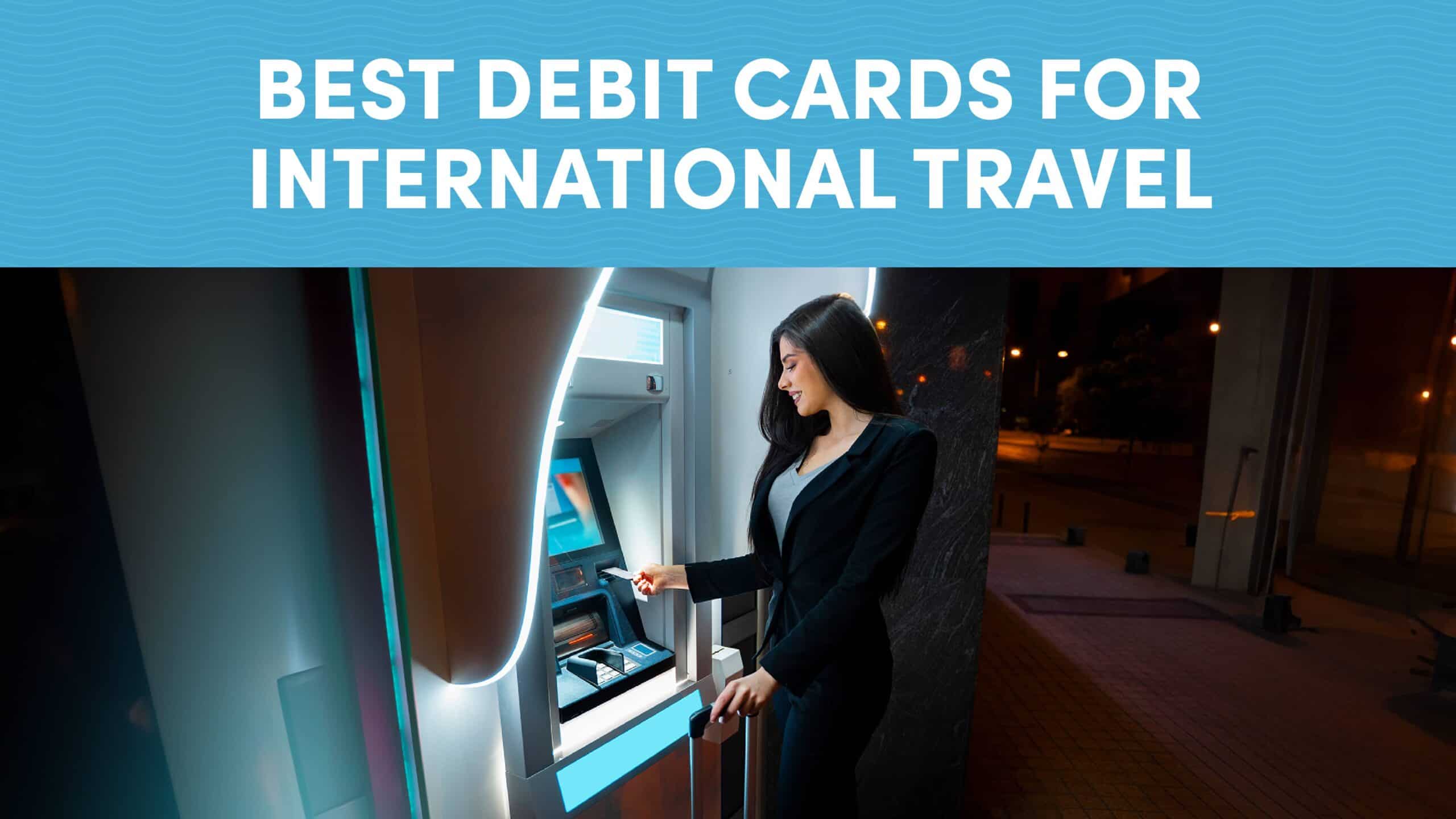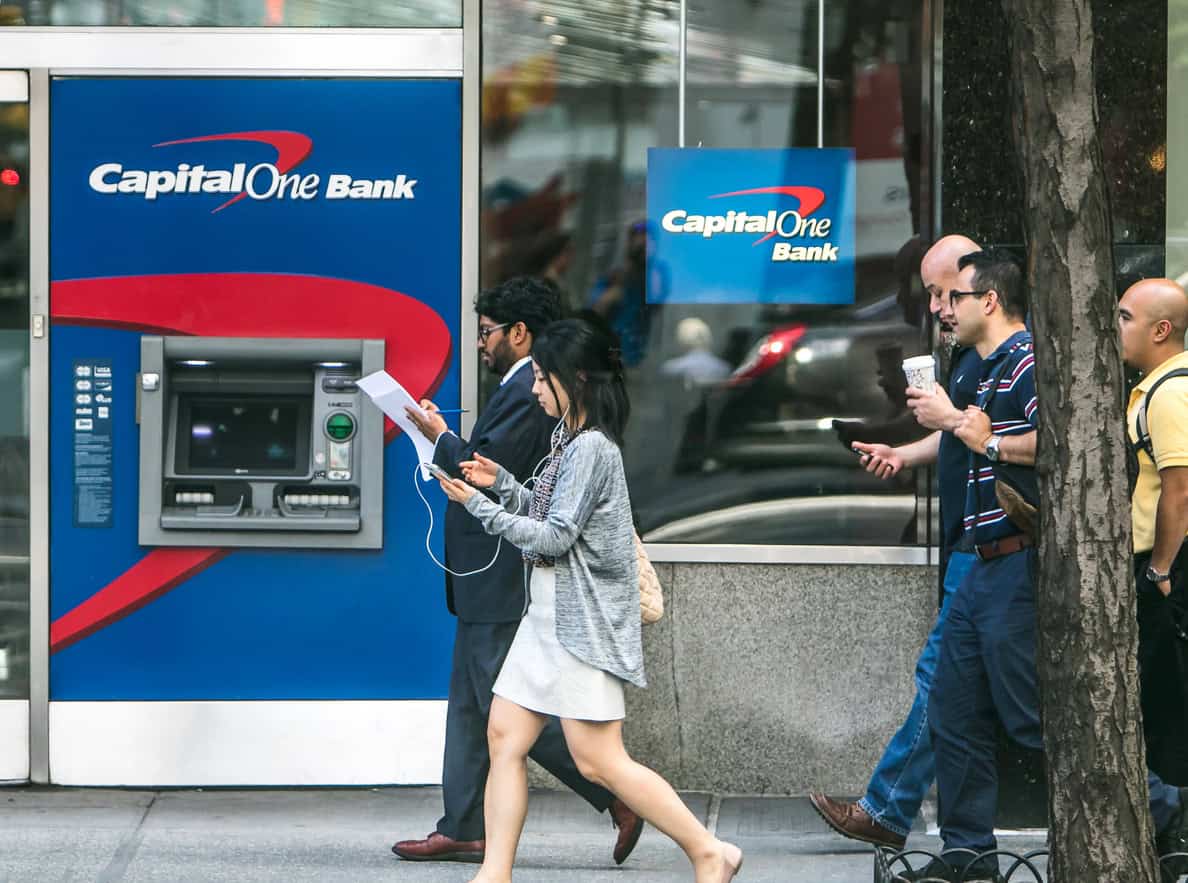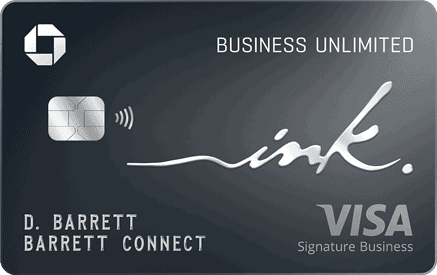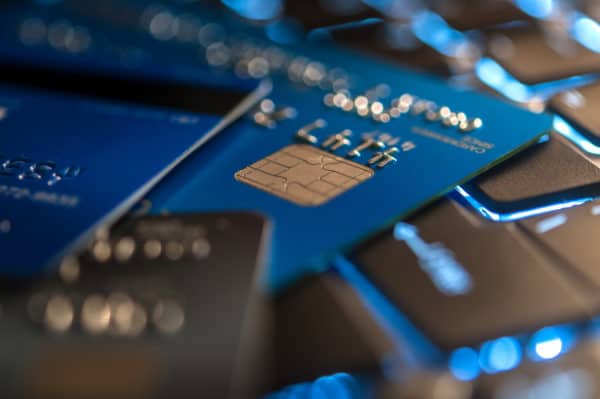
10xTravel is part of an affiliate sales network and receives compensation for sending traffic to partner sites, such as CreditCards.com. This site may earn compensation when a customer clicks on a link, when an application is approved, or when an account is opened. This compensation may impact how and where links appear on this site. This site does not include all financial companies or all available financial offers. Terms apply to American Express benefits and offers. Enrollment may be required for select American Express benefits and offers. Visit americanexpress.com to learn more. All values of Membership Rewards are assigned based on the assumption, experience and opinions of the 10xTravel team and represent an estimate and not an actual value of points. Estimated value is not a fixed value and may not be the typical value enjoyed by card members.
Note: Some of the offers mentioned below may have changed or may no longer be available. The content on this page is accurate as of the posting date; however, some of our partner offers may have expired. You can view current offers here.
Avoiding high fees abroad begins at home. Packing the right debit card in your wallet before traveling is key to avoiding high ATM withdrawal fees, credit card cash advance interest repayments and credit card processing fees. It’s also key for accessing the best exchange rate possible.
While points and miles enthusiasts like ourselves always recommend using a credit card where possible, that advice doesn’t always ring true when traveling abroad. Many foreign merchants charge high credit card processing fees and accept Visa or Mastercard only. In many cases, merchants may not even accept credit cards as a payment method.
For these reasons, having access to cash is crucial for international travel. And if you want to secure the best exchange rate, debit cards with no foreign transaction fees are going to be your best bet.
Let’s take a look at the best debit cards for international travel, as well as the key features to watch out for when selecting a travel debit card.
Key Features to Look for When Choosing a Debit Card for International Travel
When trying to work out which debit card is best for international travel, there are some key features you can compare between cards to help you decide.
No Foreign Transaction Fees
Every time a foreign bank processes your card, the card processing network will assess a foreign transaction fee. For Visa and Mastercard, this is a fee of 1% of the total transaction.
Depending on your card issuer, they may choose either to absorb this fee for you, meaning you won’t have to pay any foreign transaction fees, or they may opt to add on their own fee, typically of around 2%. If they choose to add on their own fee, foreign transactions will usually cost you around 3% of the total purchase.
For longer vacations, bigger families or simply higher expenses abroad, cards with foreign transaction fees can end up racking up a lot of money in extra fees. For this reason, it’s key to carry debit cards with no foreign transaction fees.
Likewise, debit cards with no foreign transaction fees can begin saving you on fees even before you travel abroad. Keep in mind that every time a foreign bank processes your card, you could end up having to pay foreign transaction fees. That means if you’re booking a hotel online in Paris or an airport transfer service in England, even from the comfort of your own sofa in the United States, you may still end up paying a foreign transaction fee.
Additionally, foreign countries that use the U.S. dollar as their currency can trap you into thinking that you’re making a local transaction. For example, if you make a purchase in Panama or Ecuador using a card that assesses foreign transaction fees, you’ll be charged the fee, even though you’re making a transaction in US dollars. That’s because it’s still a foreign bank that’s processing your transaction, triggering the assessment of a foreign transaction fee.

Low ATM Fees and Fee Reimbursement
As already mentioned, it’s key to have cash with you when traveling abroad. Not every merchant accepts card payments, and if they do, the transaction may come with exorbitant processing fees.
While U.S. dollars are often in demand in developing countries or those with high inflation, it’s still good to have some local currency on you. Foreign merchants may not always be able to give you enough change or may push up the price in U.S. dollars.
To access local currency, you may need to withdraw money at an ATM using a debit card. Withdrawing money from an ATM using a credit card is never a good idea, as it will result in hefty cash advance interest fees.
While using a debit card will save you money, it’s important to be aware of the fees associated with foreign ATM withdrawals.
Out-of-network ATM fees are one of the fee types you may run into. Your bank may charge a fee every time you withdraw cash from an ATM outside its network. Your bank may also charge a higher fee for out-of-network withdrawals abroad compared to domestic out-of-network withdrawals. Bank of America is an example of this, charging $5 for international out-of-network ATM withdrawals and $2.50 for domestic out-of-network withdrawals.
When using an out-of-network ATM, you may also run into ATM operator fees. These are charged by the bank or network that owns the ATM and will be charged on top of the out-of-network fees levied by your bank.
A currency conversion fee may also apply.
It’s a good idea to select a card with a wide, global network of ATMs to avoid out-of-network fees in the first place. That said, the best way to avoid as many of these fees as possible is to select a debit card that doesn’t charge out-of-network fees and that reimburses ATM operator fees.
Global Acceptance
If a foreign merchant supports card payments, it’s more than likely that they’ll accept both Mastercard and Visa. However, the same can’t be said for American Express or Discover.
While both Amex and Discover have increased their acceptance rates in the last few years, they’re still less commonly accepted than Visa or Mastercard. For this reason, it’s important to have a mix of cards.
If you’re opening a new debit card for a specific vacation, consider researching the acceptance rates for your prospective card in your country of destination.
Best Debit Cards for International Travel
Let’s now look at the best debit cards for international travel and compare their features.
Once you’ve decided on a travel debit card, you can combine it with one or more no-annual-fee travel credit cards to get the greatest return on your travel expenses.
Charles Schwab
The Schwab Bank High Yield Investor Checking® account is one of the best accounts to open to get an excellent debit card for international travel.
When you open a Schwab Bank High Yield Investor Checking account, it will open together with a Schwab One® brokerage account and you’ll be issued a Schwab Bank Visa® Platinum Debit Card.
There are no monthly service fees or minimum balance requirements for either of the Schwab accounts and your funds are insured up to the Federal Deposit Insurance Corporation (FDIC) limit of $250,000 for your investor checking account.
The standout feature of the Charles Schwab international debit card is that it’s free of foreign transaction fees and offers unlimited ATM rebates. This gives you maximum freedom when withdrawing cash from ATMs abroad.
You can also earn a variable rate of interest on your funds, although you could earn better rates with other bank accounts.
If you’re the type of traveler who doesn’t want to spend time researching ATM locations ahead of your trip, the Schwab debit card could be well suited to you.

Aspiration Summit
The Aspiration Summit checking account is another great option for saving money when using a debit card abroad.
With your Aspiration debit card, you can withdraw from all ATMs in the Allpoint network with no fees applied. There are 55,000 ATMs within the Allpoint network, scattered across the U.S. as well as Puerto Rico, Canada, Mexico, Australia and the United Kingdom.
The account has no monthly service fees or minimum balance requirements. Your funds are also protected up to the FDIC insurance limit. However, you’ll need a minimum deposit of $10 to open an account.
You’ll also need a minimum account balance of $2,500 to earn a variable rate of interest, currently standing at 1%. On top of that, you’ll need to spend a minimum of $500 per month using your Aspiration debit card to be eligible for interest. But if you’re simply holding the card to avoid fees during international travel, then the interest-earning requirements are irrelevant.
The main downside to this card is that it doesn’t reimburse out-of-network ATM operator fees. At best, you can receive one out-of-network ATM operator fee reimbursement per month if you subscribe to Aspiration Plus (for $7.99 per month or $71.88 per year). This means you’re restricted to using ATMs in the Allpoint network when abroad, which themselves aren’t available in every foreign country.
For these reasons, the Aspiration Summit debit card is best suited to those traveling in countries with access to Allpoint network ATMs.

Capital One 360
Adding to Capital One’s range of lucrative consumer credit cards, the Capital One 360 Checking Debit Card is one of the best debit cards for international travel.
This card charges no foreign transaction fees or out-of-network ATM fees. That means you can spend and withdraw abroad without being charged anything by Capital One (this applies to 360 products only).
The account is also free of monthly service fees and minimum balances.
However, Capital One won’t reimburse you for out-of-network ATM operator fees. That means if you can’t find a MoneyPass, Capital One or Allpoint ATM abroad, you’ll be liable to pay ATM operator fees.
Considering that the majority of these ATMs are found within the U.S. (except from Allpoint ATMs located in Puerto Rico, Canada, Mexico, Australia and the United Kingdom) you’re slightly limited when it comes to withdrawing cash abroad with no fees.

Fidelity Cash Management Account
As a brokerage account that enables saving and spending, the Fidelity Cash Management account comes with a debit card that can save you on international ATM fees.
When using your Fidelity debit card, as long as the ATM has either a Visa®, Plus® or Star® logo, all ATM fees will be reimbursed. This gives you a great deal of flexibility when withdrawing abroad.
There are no minimum balance requirements or monthly service fees. Additionally, uninvested cash balances are swept into FDIC-insured accounts at participating banks, protecting your funds and allowing you to earn interest.

Betterment Checking Account
Betterment offers a suite of investment services, in addition to a mobile-first checking account and Visa debit card.
Betterment doesn’t charge any foreign transaction fees or out-of-network ATM fees. It also reimburses all ATM fees, regardless of whether they’re domestic or international. There are no overdraft fees, no minimum balances and no monthly service fees. You can also fully control your account and card from the app, making it perfect for the traveler on the go. These features make it one of the best debit cards for international travel.
While Betterment itself isn’t a bank, your funds will be FDIC-insured by nbkc bank. And though you may not be able to earn interest on your balance, you’ll be able to earn cashback rewards on purchases at Costco, Adidas and Aeropostale.
First Republic ATM Rebate Checking
The First Republic ATM Rebate Checking bank account, owned by JPMorgan Chase, does exactly as its name suggests.
Using its debit card, you can withdraw your cash worldwide and have all ATM fees reimbursed. It’s also completely free of foreign transaction fees, making it great for purchases abroad where credit card processing fees are high. Additionally, you can have peace of mind knowing that your funds are FDIC insured.
However, unlike other debit card accounts, there is a minimum opening balance of $500 as well as an average daily balance requirement of $3,500. If you slip below the daily minimum balance requirement, you’ll be charged a monthly service fee of $25.
This makes it less than ideal for infrequent travelers as well as those who could earn a better interest rate in a different bank account.

Wise
The Wise multi-currency account prioritizes low fees and transparency, making it one of the best debit cards for international travel.
You can hold and convert your FDIC-insured funds in up to 40 currencies, exchanging your money at the mid-market rate, free of hidden fees. You can also access local account details for up to nine currencies, allowing you to receive international payments without cross-border fees.
Using the Wise debit card, you can make up to two free withdrawals per month with a maximum cumulative value of $100, regardless of the country. For withdrawals greater than $100, you’ll be charged 2% of the amount and for every withdrawal after the second per month, you’ll be charged $1.50.
With Wise, you can also opt into an interest-earning account on your USD balance, earning a variable rate that at the time of publication is pretty competitive.
Wise is free of foreign transaction fees, but charges a small fee for currency conversions.
One drawback to Wise is that while a certain amount of ATM withdrawals per month are fee-free, it doesn’t reimburse you for ATM operator fees.
How to Choose the Right Debit Card for Your Travel Needs
When deciding which debit card is the best one to carry for your international travel, it’s important to be methodical. Here’s a strategy for choosing the best travel debit card.
Assess Your Travel Habits
Before comparing the best travel debit cards, you’ll want to begin by assessing your travel habits. Ask yourself the following questions:
- Where do I want to travel to?
- How often do I travel abroad?
- Are ATMs widespread in my country of destination?
- Are cards widely accepted in my country of destination?
By answering these questions, you’ll be better positioned to select a card best suited to your travel goals.
Determining where you want to travel enables you to research ATM and card payment availability in your desired destination. Estimating how often you’ll travel abroad can help you judge the importance of certain account features.
For example, a travel debit card with a monthly balance requirement and low APY or a monthly service fee would only be worth it if you traveled often enough. However, if foreign travel is a once-a-year affair, it would be hard to justify locking up funds in an account that earns little interest, or even worse, paying a monthly fee. This would outweigh any benefits associated with saving on foreign transaction fees.

Compare Card Features
Once you’ve assessed your travel habits, you can turn to the specific features of each prospective travel debit card.
When comparing card features, you’ll want to ask the following questions:
- Are there opening deposit or minimum balance requirements?
- Are there foreign transaction fees?
- Are there out-of-network ATM withdrawal fees?
- Are out-of-network ATM operator fees reimbursed?
- How large is the card issuer’s ATM network and is it present in the countries you’re planning on traveling to?
- Are there any additional features?
If you know which countries you’ll be using your card in, you can find out which ATM networks are present in these countries as well as what types of cards are most widely accepted.
For example, if you plan on traveling to a country in which the majority of ATMs are out of your bank’s network, ensuring you have a debit card that reimburses out-of-network ATM operator fees and doesn’t charge out-of-network fees is crucial.
You’ll also want to consider if there are any minimum balance or deposit requirements for your prospective cards. Such requirements pose an opportunity cost, as you may benefit more from keeping this money in a different bank account that would earn higher interest.
Additionally, remember that there’s a difference between foreign transaction fees and ATM withdrawal fees. For instance, a card may not charge any foreign ATM withdrawal fees but instead charge a foreign transaction fee on purchases. In this case, the card may still have value, as you’ll be able to access cash without fees. You’d simply need a different debit card when it comes to purchases, or to stick to cash and credit cards.
Read Reviews and Get Recommendations
Cards can sometimes appear more lucrative than they really are, especially if you fail to read the small print of your card agreement.
To avoid disappointment, it’s important to conduct some research and seek advice from other travelers and card users. Seeking advice from people using their card in the countries where you’re planning to travel can be beneficial to understanding the card’s value. The 10xTravel Insiders Facebook group is a great source for finding the experiences and opinions of fellow travelers and card users.
Apply for the Chosen Card
Once you’ve selected the best prepaid debit card for international travel, the final step is to apply for the card before your next vacation begins.
You should allow at least 14 days for your application to process, so you can ensure that your new card arrives before your departure date. In some cases, you may receive a digital debit card instantly, but not all foreign ATMs can accept this type of payment. Debit cards typically take up to 10 business days to arrive, so leaving enough time for unforeseen disruptions is key to being able to use your new card when you’re abroad.
You should also contact your card issuer or bank before you go abroad so that they don’t suspend your card on grounds of suspicious activity.
Once you are traveling abroad with your card, make sure to always pay in the local currency. Some foreign merchants may offer to charge your transaction in U.S. dollars at the point of sale. This is known as dynamic currency conversion (DCC) and is touted as a secure way of guaranteeing you a certain exchange rate at the time of payment.
However, in reality, DCC often comes with a significant markup fee that ends up costing you far more. So always ensure that your transaction is charged in the local currency.
Final Thoughts: Selecting Your Ideal Travel Debit Card
Travel doesn’t need to be expensive. Here at 10xTravel, we’re all about finding ways to get the biggest bang for your buck when it comes to traveling abroad.
But without the right debit card in your wallet, you’re likely to run into some high fees when withdrawing and purchasing abroad.
When looking for a travel debit card, start by assessing your travel habits. With a solid picture of your travel habits in mind, you’ll be in a better position to compare card features.
Focus on cards that reimburse out-of-network ATM operator fees as well as those that absorb foreign transaction fees. That way, the next time you’re heading through TSA Pre-Check en route to your next destination, you’ll have peace of mind knowing you can spend without running into high fees.
Once you’ve settled on the best travel debit card for you, stay tuned with 10xTravel for more hints, tips and strategies for saving while traveling.
New to the world of points and miles? The Chase Sapphire Preferred® Card is the best card to start with.
With a bonus of 75,000 bonus points after you spend $5,000 on purchases in the first 3 months from account opening. , 5x points on travel booked through the Chase TravelSM Portal and 3x points on restaurants, streaming services, and online groceries (excluding Target, Walmart, and wholesale clubs), this card truly cannot be beat for getting started!
Editors Note: Opinions expressed here are author’s alone, not those of any bank, credit card issuer, hotel, airline, or other entity. This content has not been reviewed, approved or otherwise endorsed by any of the entities included within the post.









